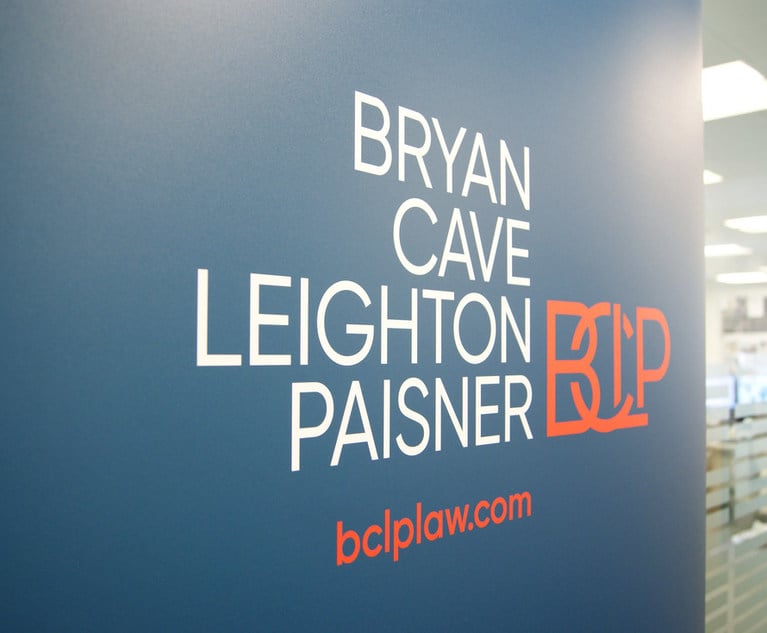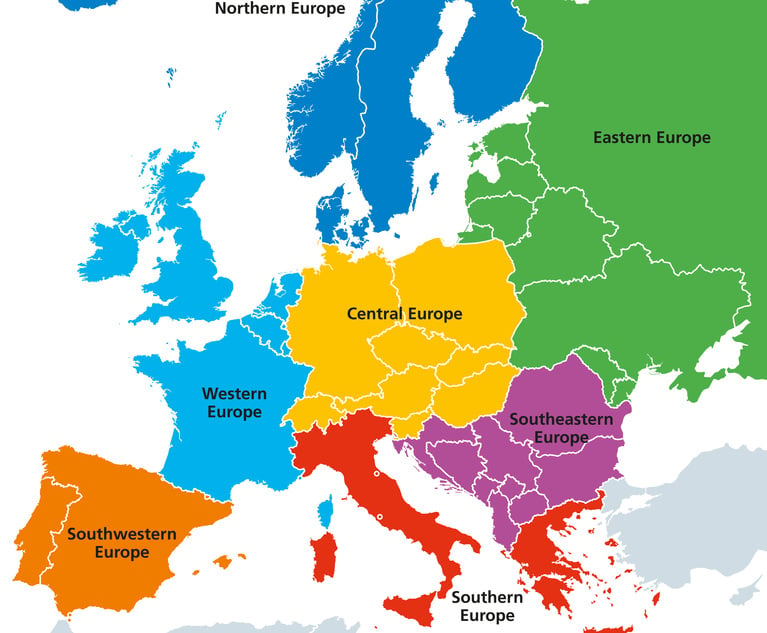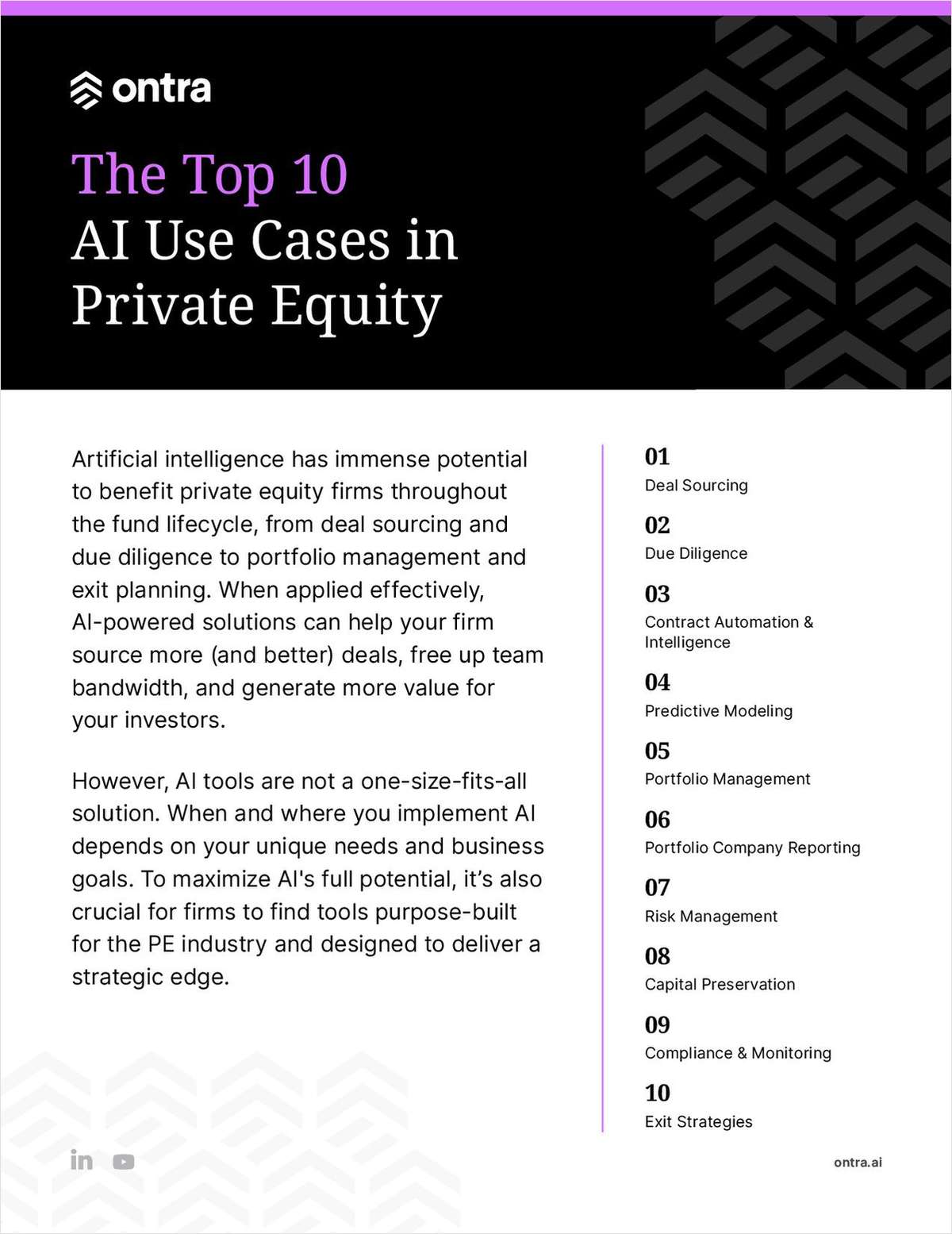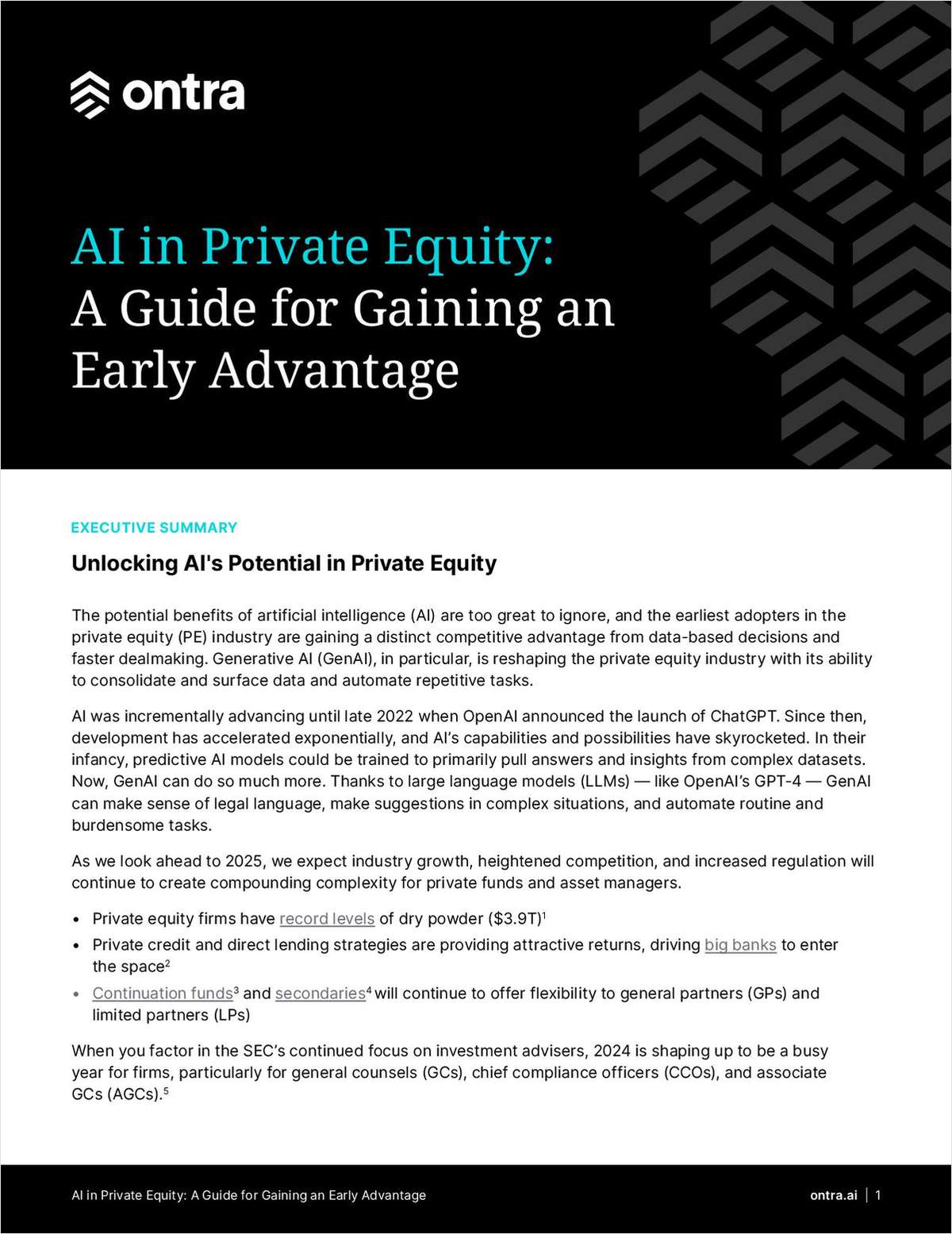Australia's Legal Tech Scene is Making Waves
Australia's legal technology ecosystem is in some places still being developed. But in its focus on data and fostering innovation, it's already proving to be a force on the global stage.
April 01, 2019 at 09:30 AM
10 minute read
The original version of this story was published on Legal Tech News
![]()
When Jodie Baker moved from Kansas City back to Melbourne, Australia, in 2012 to join law firm Hive Legal, she began internally developing a technology that would become matter-management platform Xakia Technologies. She took Xakia out on its own in mid-2016, only to find an undeveloped local legal technology market.
"When I started Xakia in 2016, I looked around and thought there wasn't really any ecosystem for legal technology in Australia," Baker says. "I was actually disappointed; I felt so out on a limb."
Just three years later, the legal technology ecosystem in Australia has exploded. For starters, the Australian Legal Technology Association (ALTA), of which Baker is deputy chair, was founded in 2017 and has created a central meeting place for both new startups and established companies to convene and strategise with one distinct goal: to grow Australia's legal technology provider community.
But it's not just vendors; there's also a growing acceptance of legal technologies in the overall legal marketplace. There's the rise of corporate legal operations among some of Australia's largest companies, evidenced by the Corporate Legal Operations Consortium (CLOC) holding its first Australian event in late 2018. A number of Australian firms have been innovators in the past three years with artificial intelligence, data analytics and other new technologies. Even courts and law schools are getting in on the game.
What it means is that globally, tech-savvy law firms and corporate legal departments are going to start hearing from their Aussie counterparts more and more as the country grows into an international legal tech player.
|Australia's Data Evolution
Just as in other countries, the focus on Australian legal technology has largely stemmed from an increase in data – both in number of data sources and in the sheer amount of data collected by law firms and corporate legal departments alike.
But while the U.S. focus on data in the courtroom has been evident since rulings like 2012′s Da Silva Moore, the first ruling of its kind in Australia's courts did not occur until 2017's McConnell Dowell v. Santam, where a document set numbering about four million in total led Supreme Court of Victoria Justice Peter Vickery to order technology-assisted review (TAR) in the case.
Speaking with Legaltech News today, Vickery, now acting as an independent arbitrator and mediator, says that litigants in Australian courts face "nothing less than a document tsunami upon us".
"From my observations of trends in this area, the local marketplace in Australia appears to be growing to embrace the new technologies," says retired Supreme Court of Victoria Justice Peter Vickery. "I would say there are two main drivers behind his development: First, the necessity spurred by the need to manage large and growing volumes of ESI [electronically stored information]; and second, because of the growing availability of new technologies and efficient technologies such as big data analytics, which are being developed to manage ESI.
"The principal catalyst for the development of TAR has been necessity," Vickery adds. "The wisdom enshrined in the English-language proverb 'necessity is the mother of invention' rings true. The primary driving force has been the sheer volume of documents generated by computers on a daily basis in large enterprises or in the course of large commercial or development projects. The volumes are unprecedented and in some cases are staggering."
Indeed, data is at the centre of why many legal technologies have exploded worldwide. Unlike the U.S., though, many of Australia's legal technology companies do not traffic in e-discovery, at least directly. Instead, notes Julian Uebergang, the focus has been on data in a different way – through analytics insight and increased collaboration.
Today, Uebergang is the managing director of APAC for AI-focused legal tech company Neota Logic, but in a past life, he worked in the e-discovery industry. He says that he sees a lot of similarities between the maturing of the early U.S. e-discovery market and newer Australian legal technologies – where the focus has been on new technology, but "not necessarily the facilitation of exchanging of data".
Uebergang explains: "We hear a lot about AI and blockchain, and they're the technologies, but ultimately it's about accessing the data and providing solutions around that data… When the focus changes from technologies to data, we'll see some really sophisticated strategies around delivering our solutions."
This evolution may already be underway, with law firms like Corrs Chambers Westgarth taking the lead. An international law firm of 600-plus attorneys based in Sydney, Corrs has been aggressive in recent years with implementing new technologies, ranging from bringing in AI tool Luminance to assist with property due diligence and M&A due diligence transactions, to developing internal platforms like CorrsEdge to assist document production, to even creating a dedicated client technology solutions team.
But to hear Corrs director of technology Berys Amor tell it, the focus of all of these initiatives isn't new technology for technology's sake. It's to apply data in a way that makes a distinct difference in the firm's operations.
"These business applications are disrupting the legal marketplace by providing enormous value in the form of intelligent and efficient process automation for our clients," she explains. "They are actually integrating Corrs into our clients' legal practice and value chain, providing the systems and tools to support our clients' day-to-day activities. Through responsive dashboards, our clients have access to secure platforms that streamline and automate everyday processes to drive efficiencies. Our clients are using these solutions to take repetitive tasks away from their employees and members of their legal team, freeing them up to focus on more meaningful work."
|Corporate Catching Up
This explosion of data and development has expedited the need for a new innovation structure in Australia's legal world. Uebergang says law firms like Corrs have primarily taken charge in Australia, developing sophisticated innovation arms in a short period of time.
"Even when I started three years ago, the idea of having an innovation manager didn't exist, just didn't happen," he adds. "Innovation was an annual discussion, or a lunchtime discussion, where now we're seeing it with full-time roles, and at all levels."
Notably absent, though, are corporate legal departments. The corporate legal ops segment is tangible, notes Uebergang, but still in its infancy. "We just haven't hit that level of maturity as the U.S., which is interesting, because everything I see from a law firm and a technology perspective is pretty comparable to what's happening elsewhere in the world, but for whatever reason, the legal ops function just hasn't evolved quite as quickly."
The numbers back him up. The Australian Legal Department Operations Survey 2018 from CLOC, Gen2Law and HBR Consulting, found that of the 17 companies that participated, more than half had just one legal operations professional. The median for companies in a U.S.-based HBR Law Department survey, meanwhile, was four. And while Australian legal departments were advanced in cross-functional alignment in particular, 41 percent were deemed "underdeveloped" when it came to technology and process support.
Sheldon Renkema, general manager for legal in the corporate solicitors' office at Australian conglomerate Wesfarmers, admits: "Australia is generally less mature in legal operations compared with the U.S." However, this trend has been slowly changing.
"It has been noticeable how many people have been appointed to dedicated legal ops roles in the last year, and I expect that trend to continue," Renkema explains.
One of the main issues facing increased maturity is simply one of dollars and cents. He further notes: "The challenge with technology solutions is that many are expensive and it can be difficult to secure support for it at a time when there is significant pressure on the costs of the legal function."
But legal ops will get there, he believes – even if not on the same level as the U.S. "In Australia, more people will be appointed to dedicated legal ops roles and the level of sophistication will increase. However, in the same way that the size of corporate legal teams in Australia is much smaller than it is in the U.S., I would not expect legal ops teams to reach anywhere near the size that they are in the U.S."
|From Oceania to the World
But the relative size of the market doesn't mean that innovation will be stifled. Getting to the next level is simply a matter of education.
In his work surrounding TAR following McConnell Dowell v. Santam, retired justice Vickery has seen this need to educate firsthand. He says that a major barrier to innovation still lies in the need to educate clients – "after all, it is the client who is called upon to pay for legal services".
"Even with the proven efficiency of TAR, the process still involves a significant upfront cost, which must be paid for by the client," Vickery says. "Like any commercial decision, a client will need to be satisfied with the cost/benefit of the process before making a decision to invest in the process. Tools need to be considered and developed to explain these processes to the lay client, to reduce the barriers to acceptance."
The driving force behind this education seems to be coming from new entrants to the legal market. While there are some established companies that are part of ALTA, a large portion of the organisation's 40-plus members are startup companies. Uebergang, meanwhile, has been involved for four years with a legal technology project at Melbourne University and four other Australian law schools, where a group of 60 students use technology to solve various access-to-justice problems.
The result is an increasingly more educated, technology-savvy workforce. Cross-functional skills, he says, are "from a law firm perspective, especially here in Australia, really in demand", adding: "So students that have got experience in multiple disciplines or have had experience in a startup business, from a recruitment perspective that's what law firms and corporate legal departments are looking for."
At Corrs, Amor has helped put this new workforce into action: The firm has developed a group of young lawyers from a variety of practice areas to develop ideas and design solutions, with an eye towards maximising value for the firm. The group, she says, "is also the champion for new technologies and assists with ideas on engagement and adoption of technology across the business". In her view, cultural change and freeing up lawyers' time to experiment is the main key towards overcoming barriers to innovation.
That entrepreneurial mindset and willingness to embrace new technologies is something that could lead Australian legal technology to continue its upward trajectory, even as more startup technology providers enter the space. Even with a population one-tenth of the U.S. and an overall legal market with smaller revenues, there still seems to be space for growth with all.
And that means U.S.-based legal technologists and others from across the world may be interacting more and more with their Australian counterparts. "You can point to a number of hotspots around the world that are doing really exciting stuff, and I think that for Australia is going to be the case, that people recognise there is a quite strong ecosystem here," Xakia's Baker exclaims. "It's not just a profile-raising exercise. It's that there is quite a lot of strength here."
This content has been archived. It is available through our partners, LexisNexis® and Bloomberg Law.
To view this content, please continue to their sites.
Not a Lexis Subscriber?
Subscribe Now
Not a Bloomberg Law Subscriber?
Subscribe Now
NOT FOR REPRINT
© 2024 ALM Global, LLC, All Rights Reserved. Request academic re-use from www.copyright.com. All other uses, submit a request to [email protected]. For more information visit Asset & Logo Licensing.
You Might Like
View All
BCLP Mulls Merger Prospects as Profitability Lags, Partnership Shrinks


To Thrive in Central and Eastern Europe, Law Firms Need to 'Know the Rules of the Game'
7 minute readTrending Stories
Who Got The Work
Michael G. Bongiorno, Andrew Scott Dulberg and Elizabeth E. Driscoll from Wilmer Cutler Pickering Hale and Dorr have stepped in to represent Symbotic Inc., an A.I.-enabled technology platform that focuses on increasing supply chain efficiency, and other defendants in a pending shareholder derivative lawsuit. The case, filed Oct. 2 in Massachusetts District Court by the Brown Law Firm on behalf of Stephen Austen, accuses certain officers and directors of misleading investors in regard to Symbotic's potential for margin growth by failing to disclose that the company was not equipped to timely deploy its systems or manage expenses through project delays. The case, assigned to U.S. District Judge Nathaniel M. Gorton, is 1:24-cv-12522, Austen v. Cohen et al.
Who Got The Work
Edmund Polubinski and Marie Killmond of Davis Polk & Wardwell have entered appearances for data platform software development company MongoDB and other defendants in a pending shareholder derivative lawsuit. The action, filed Oct. 7 in New York Southern District Court by the Brown Law Firm, accuses the company's directors and/or officers of falsely expressing confidence in the company’s restructuring of its sales incentive plan and downplaying the severity of decreases in its upfront commitments. The case is 1:24-cv-07594, Roy v. Ittycheria et al.
Who Got The Work
Amy O. Bruchs and Kurt F. Ellison of Michael Best & Friedrich have entered appearances for Epic Systems Corp. in a pending employment discrimination lawsuit. The suit was filed Sept. 7 in Wisconsin Western District Court by Levine Eisberner LLC and Siri & Glimstad on behalf of a project manager who claims that he was wrongfully terminated after applying for a religious exemption to the defendant's COVID-19 vaccine mandate. The case, assigned to U.S. Magistrate Judge Anita Marie Boor, is 3:24-cv-00630, Secker, Nathan v. Epic Systems Corporation.
Who Got The Work
David X. Sullivan, Thomas J. Finn and Gregory A. Hall from McCarter & English have entered appearances for Sunrun Installation Services in a pending civil rights lawsuit. The complaint was filed Sept. 4 in Connecticut District Court by attorney Robert M. Berke on behalf of former employee George Edward Steins, who was arrested and charged with employing an unregistered home improvement salesperson. The complaint alleges that had Sunrun informed the Connecticut Department of Consumer Protection that the plaintiff's employment had ended in 2017 and that he no longer held Sunrun's home improvement contractor license, he would not have been hit with charges, which were dismissed in May 2024. The case, assigned to U.S. District Judge Jeffrey A. Meyer, is 3:24-cv-01423, Steins v. Sunrun, Inc. et al.
Who Got The Work
Greenberg Traurig shareholder Joshua L. Raskin has entered an appearance for boohoo.com UK Ltd. in a pending patent infringement lawsuit. The suit, filed Sept. 3 in Texas Eastern District Court by Rozier Hardt McDonough on behalf of Alto Dynamics, asserts five patents related to an online shopping platform. The case, assigned to U.S. District Judge Rodney Gilstrap, is 2:24-cv-00719, Alto Dynamics, LLC v. boohoo.com UK Limited.
Featured Firms
Law Offices of Gary Martin Hays & Associates, P.C.
(470) 294-1674
Law Offices of Mark E. Salomone
(857) 444-6468
Smith & Hassler
(713) 739-1250










